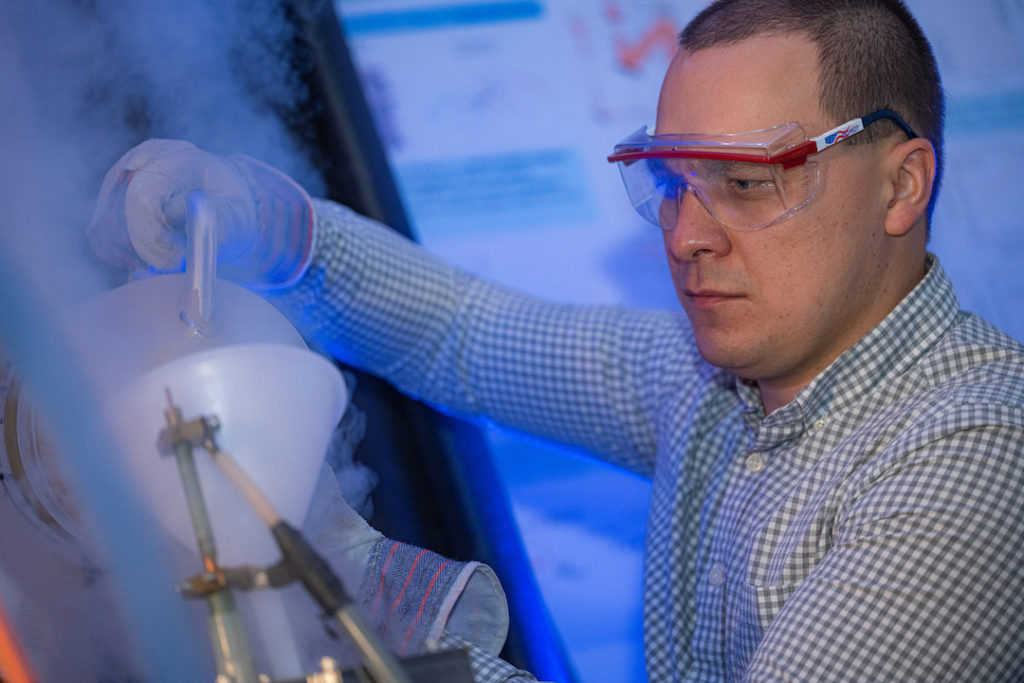
Discovery enables manufacturing of ultrathin solar panels, advanced optoelectronics
By creating a new way for light and matter to interact, researchers at the University of California, Irvine have enable...
Read More

Discovery enables manufacturing of ultrathin solar panels, advanced optoelectronics
By creating a new way for light and matter to interact, researchers at the University of California, Irvine have enable...
Read More
Rice lab’s RAMBO reveals unexpected influence on compound’s crystal lattice.
Phonons are collective atomic vibrations, or quasiparticles, that act as the main heat carriers in a crystal lattice. Under certain circumstances, their properties can be modified by electric fields or light. But until now, nobody noticed they can respond to magnetic fields as well.
That may be because it takes a powerful magnet.
Rice Un...
Read More
A phonon laser formed by coupled optical resonators. Mechanical vibrations in resonator (blue) could be enhanced when the frequency difference of two optical supermodes matches with the frequency mechanical vibrations.
Credit: Micro/Nano Photonics Lab
New laser uses light to create sound. A team of international researchers led by engineers at Washington University in St. Louis has seen the light and now has a lasing system that produces “good vibrations.” They developed a lasing system already adept at producing tiny light packets called photons into a tunable system that also makes little bits of mechanical energy called phonons – the energy products of oscillation, or vibration...
Read More
Recent Comments